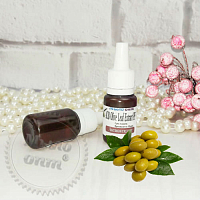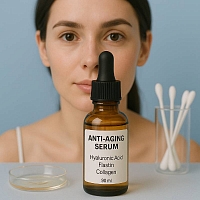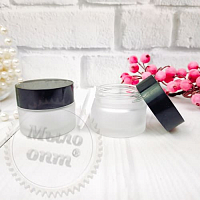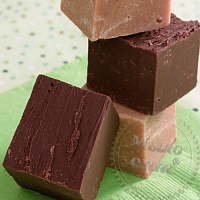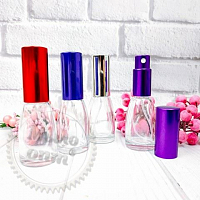-
 Absolutes
Absolutes
-
 Active Complexes
Active Complexes
-
 Actives and Peptides for Cosmetics
Actives and Peptides for Cosmetics
-
 Amino Acids
Amino Acids
-
 Food Flavorings
Food Flavorings
-
 Ayurveda
Ayurveda
-
 Vitamins
Vitamins
-
 Gelling Agents and Thickeners
Gelling Agents and Thickeners
-
 Hydrosols and Floral Waters
Hydrosols and Floral Waters
-
 Hydrolyzed Proteins
Hydrolyzed Proteins
-
 Fragrant and aromatic substances
Fragrant and aromatic substances
-
 Acids, Salts, Alcohols, and Alkalis
Acids, Salts, Alcohols, and Alkalis
-
 Preservatives and Antioxidants
Preservatives and Antioxidants
-
 Cosmetic Raw Materials
Cosmetic Raw Materials
-
 Dyes, Pearlescents, and Glitters
Dyes, Pearlescents, and Glitters
-
 Face Masks, Scrubs, and Dried Flowers
Face Masks, Scrubs, and Dried Flowers
-
 Oils, batters, macerates, oil mixtures
Oils, batters, macerates, oil mixtures
-
 Candle Supplies
Candle Supplies
-
 Melt and Pour Soap Bases
Melt and Pour Soap Bases
-
 Base for cosmetics, cream, serum, shampoo
Base for cosmetics, cream, serum, shampoo
-
 Fragrance Oils
Fragrance Oils
-
 Surfactants
Surfactants
-
 Peelings for Skin
Peelings for Skin
-
 Herbal Powders and Plant
Herbal Powders and Plant
-
 Silicones and Conditioning Surfactants for Hair
Silicones and Conditioning Surfactants for Hair
-
 Raw materials for dietary supplements
Raw materials for dietary supplements
-
 Packaging for Cosmetics and Perfumes
Packaging for Cosmetics and Perfumes
-
 Molds, Packaging, Tools
Molds, Packaging, Tools
-
 Organic Extracts
Organic Extracts
-
 Emollients for Cosmetics
Emollients for Cosmetics
-
 Emulsifiers
Emulsifiers
-
 Essential Oils
Essential Oils
Astaxanthin: The Ultimate Antioxidant Powerhouse for Your Skin
Unleash the extraordinary protective and rejuvenating power of Astaxanthin with our premium red liposomal liquid, expertly sourced from China. Known as nature's most potent antioxidant, Astaxanthin is a revolutionary ingredient that goes beyond standard anti-aging, offering remarkable benefits for skin health, clarity, and resilience. This oil-soluble active is encapsulated in a liposomal form for superior delivery and efficacy, making it an indispensable addition to high-performance skincare formulations.
Description and Key Features
Astaxanthin (INCI: Haematococcus Pluvialis Extract, Caprylic/Capric Triglycerides, Tocopherol) is a vibrant red carotenoid derived from the microalga Haematococcus Pluvialis. What sets our Astaxanthin apart is its liposomal liquid form. This advanced delivery system encapsulates the Astaxanthin within tiny lipid spheres, significantly enhancing its penetration into the skin's layers and boosting its bioavailability and effectiveness.
Key features and benefits:
- Unrivaled Antioxidant Power: Astaxanthin is renowned as one of the most powerful antioxidants found in nature, with a potency far exceeding that of Vitamin C and Vitamin E. It effectively neutralizes free radicals, protecting skin cells from oxidative stress and environmental damage.
- Enhanced Vitamin E & A Efficacy: It synergistically boosts the action of Vitamins A and E, multiplying their protective and regenerative benefits within the skin.
- UV Protection (Internal & External): While not a sunscreen, Astaxanthin offers significant photoprotective properties, helping to mitigate the damaging effects of UV radiation on the skin, reducing sun-induced damage and redness.
- Anti-aging and Wrinkle Reduction: By protecting collagen and elastin from degradation and promoting cellular regeneration, Astaxanthin visibly slows down the aging process and helps to reduce the appearance of fine lines and wrinkles, promoting smoother, more youthful-looking skin.
- Moisturizing and Soothing: It aids in maintaining skin hydration and possesses soothing properties, helping to calm irritated or sensitive skin.
- Bactericidal and Antimicrobial Properties: Astaxanthin exhibits mild bactericidal and antimicrobial effects, which can be beneficial for problematic or acne-prone skin.
- Oil Soluble & Liposomal Form: Its oil solubility ensures seamless integration into oil-based formulations, while its liposomal encapsulation dramatically improves absorption and targeted delivery within the skin.
Versatile Applications and Usage Areas in Cosmetics
Astaxanthin is a powerhouse ingredient ideally suited for formulations targeting a wide array of skin concerns, particularly those requiring strong antioxidant protection, anti-aging benefits, and soothing properties. It is not suitable for candles.
- For Problematic, Acne-Prone Skin:
- Acne Treatments: Its antimicrobial and anti-inflammatory properties make it an excellent addition to creams and serums designed for managing breakouts and reducing redness associated with acne.
- "Post-Acne" Care: Ideal for formulations that help to heal and regenerate skin after acne lesions, minimizing the appearance of scars and promoting an even skin tone.
- Cleansing Cosmetic Products:
- Can be incorporated into oil cleansers, cleansing balms, or micellar waters to provide antioxidant protection during the cleansing process and prepare the skin for subsequent treatments.
- Potent Antioxidant and Anti-aging Formulations:
- Anti-aging Serums and Creams: A must-have in high-performance anti-aging products to combat oxidative stress, reduce wrinkles, and improve skin elasticity and firmness.
- Night Creams and Regenerating Treatments: Its ability to accelerate cell regeneration makes it perfect for overnight repair and rejuvenation formulas.
- UV Protection-Enhancing Products (Not Sunscreens):
- After-Sun Lotions and Serums: Helps to soothe skin and mitigate damage caused by sun exposure, supporting skin recovery.
- Daily Moisturizers: Incorporate into everyday creams to provide an additional layer of antioxidant defense against environmental aggressors, including UV radiation (complementary to SPF, not a replacement).
- Soothing and Calming Formulations:
- Excellent for products designed for sensitive, irritated, or compromised skin, helping to reduce redness and discomfort.
- As a pH Buffer Component (Secondary Use): While its primary role is active ingredient, in certain complex formulations, its presence in a liposomal base can indirectly contribute to pH stability, though it's not its main function.
Important Considerations:
- Dosage: The recommended incorporation rate for Astaxanthin is 1-2%. Exceeding this dosage is not recommended, as it may lead to a reverse effect or unwanted coloration.
- Eye Contact: Avoid direct contact with eyes. In case of contact, rinse thoroughly with water.
- Coloration: Due to its natural red color, Astaxanthin will impart a reddish hue to your formulations, which should be considered during product development.
Cosmetic Recipe: "Radiant Shield" Antioxidant Face Oil
Create a powerful, protective, and rejuvenating face oil infused with Astaxanthin to combat environmental stressors and reduce signs of aging.
| Ingredient | Percentage (%) | Function |
|---|---|---|
| Phase A (Carrier Oils) | ||
| Jojoba Oil | 40% | Closest to skin's natural sebum, non-comedogenic |
| Argan Oil | 25% | Nourishing, rich in Vitamin E, anti-aging |
| Rosehip Oil | 20% | Regenerating, rich in Vitamin A, brightens skin |
| Squalane (Olive-derived) | 12% | Excellent emollient, non-greasy, skin barrier support |
| Phase B (Active & Antioxidant) | ||
| Astaxanthin (Liposomal Liquid) | 2% | Powerful antioxidant, anti-aging, UV protection |
| Vitamin E (Tocopherol) | 1% | Antioxidant, skin conditioning |
Instructions for Preparation:
- Sanitization: Thoroughly sanitize all your equipment (beakers, stirring rods, dropper bottles) with isopropyl alcohol and allow them to air dry completely.
- Combine Carrier Oils (Phase A): In a clean beaker, combine the Jojoba oil, Argan oil, Rosehip oil, and Squalane. Stir gently to ensure they are well mixed.
- Add Active Ingredients (Phase B): To the blended carrier oils, carefully add the Astaxanthin liposomal liquid and Vitamin E (Tocopherol).
- Gentle Mixing: Stir the mixture gently but thoroughly for several minutes until all ingredients are fully incorporated and the oil has an even red hue from the Astaxanthin. Avoid vigorous shaking to prevent excessive air bubbles.
- Bottle: Carefully transfer the finished face oil into a clean, sterile dark glass dropper bottle to protect the Astaxanthin from light degradation.
Recommendations for Application and Use:
- Dosage of Astaxanthin: The 2% concentration is at the higher end of the recommended range for maximum antioxidant benefit. Do not exceed this to avoid potential reverse effects or excessive coloration.
- Oil Soluble: Astaxanthin is oil-soluble, so it's perfectly suited for oil-based serums, balms, and creams. It will not disperse well in purely water-based formulations without an appropriate emulsifier.
- Coloration: Expect your final product to have a distinct red or orange hue due to the natural color of Astaxanthin. This is normal and indicates its presence.
- Storage: Store the finished face oil in a dark glass bottle (as Astaxanthin is light-sensitive) in a cool, dry place, away from direct sunlight. This will help maintain its potency and shelf life.
- Application: Apply 2-4 drops of the oil to a clean face and neck after cleansing and toning, both morning and evening. Gently massage into the skin until absorbed. It can be used alone or layered under a moisturizer.
- UV Protection Note: While Astaxanthin offers photoprotective benefits, it does not replace the need for a dedicated broad-spectrum sunscreen for daily UV protection.
- Patch Test: Always perform a patch test on a small, inconspicuous area of skin (e.g., inner forearm) before widespread use, especially if you have sensitive skin or are new to an ingredient.
And also go to the Blog from Мыло Опт, where we share useful information about creating the right natural cosmetics
| INCI | Haematococcus Pluvialis Extract, Caprylic/Capric Triglycerides, Tocopherol | |
| Other | ||
| Application | cosmetics for problematic acne skin; caring "after acne" means; cleansing cosmetic preparations; a buffer component in cosmetics; as a pH regulator | |
| Color product | liposomal liquid red | |
| Features | avoid contact with eyes; do not exceed the dosage to avoid the opposite effect | |
| Inci | Haematococcus Pluvialis Extract, Caprylic/Capric Triglycerides, Tocopherol | |
| Input percentage | 1-2% | |
| Name | Astaxanthin 100 ml | |
| Packaging | container for transportation | |
| Packing | 100 ml | |
| Properties | bactericidal and antimicrobial, antioxidant, enhancing the action of vitamins A and E, UV protection, moisturizing, soothing, slows down aging, reduces wrinkles | |
| Purpose | Powerful antioxidant effect | |
| Solubility | oil | |
| View | liposomal fluid | |
| Valid until | 10.2026 | |
-
Date:5 DecemberAuthor:Галина, ОлевскReviews
Дуже рада, що знайшла ваш магазин. Товари завжди якісні, доставка швидка, ціни приємні. Мої клієнти задоволені косметикою, яку я виготовляю з ваших інгредієнтів. Дякую за вашу роботу!
Date:5 DecemberAuthor:Маргарита, БроварыReviewsЗавжди отримую задоволення від покупок у цьому магазині.









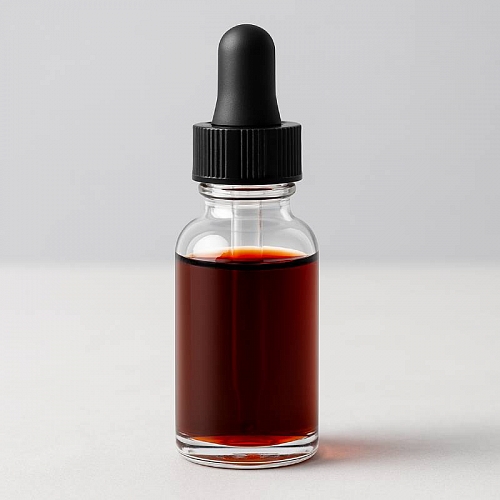
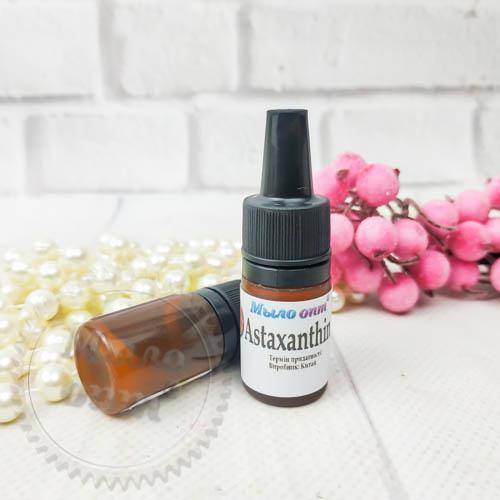


 Add to cart
Add to cart Buy in 1 click
Buy in 1 click

 Add a review
Add a review To favorites
To favorites To compare
To compare








